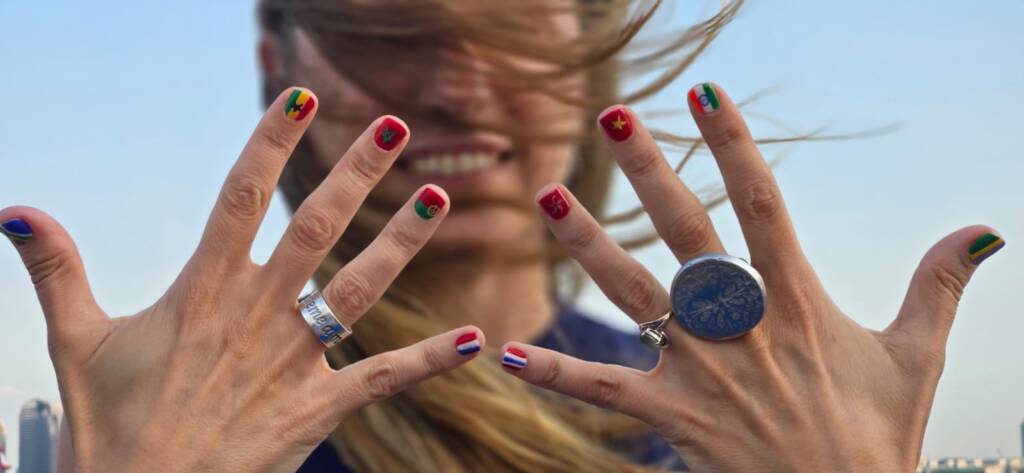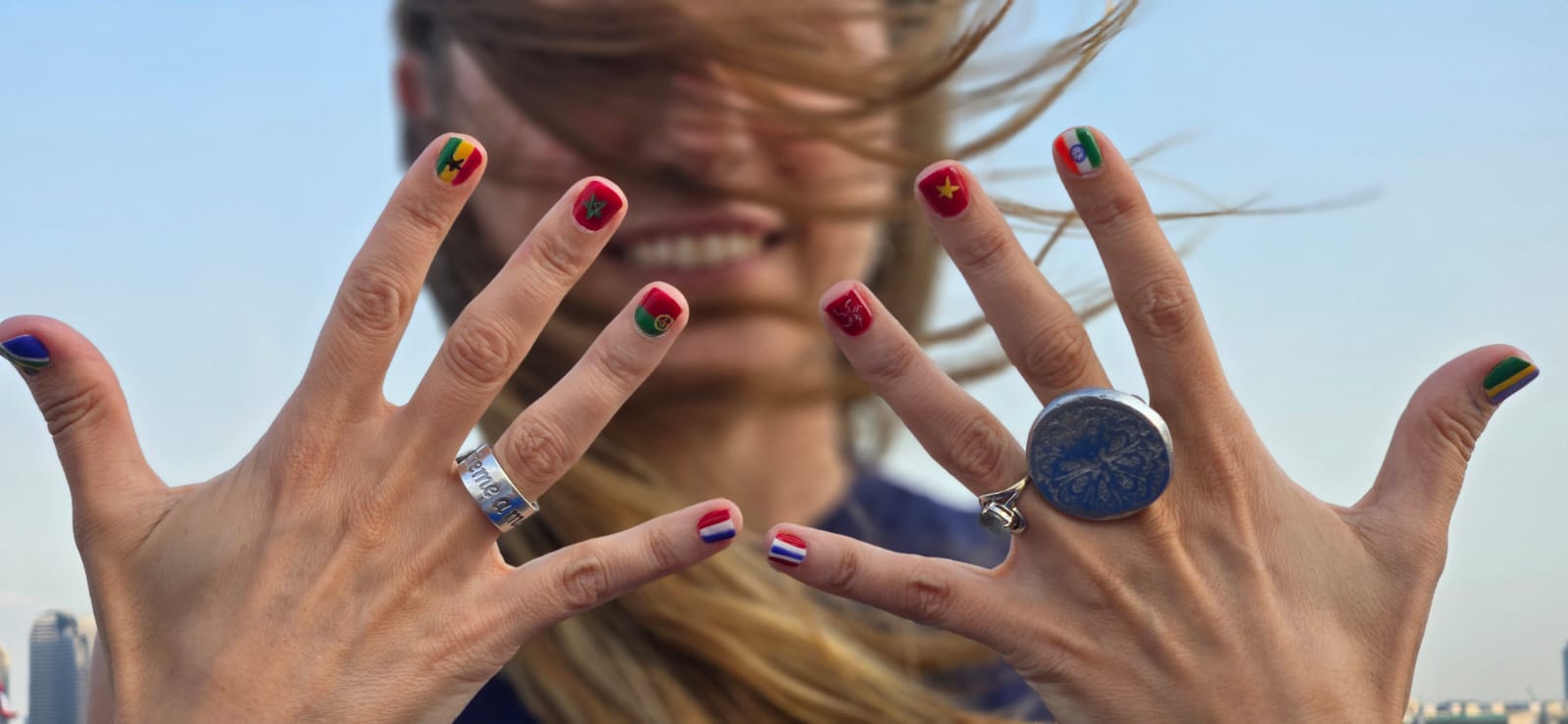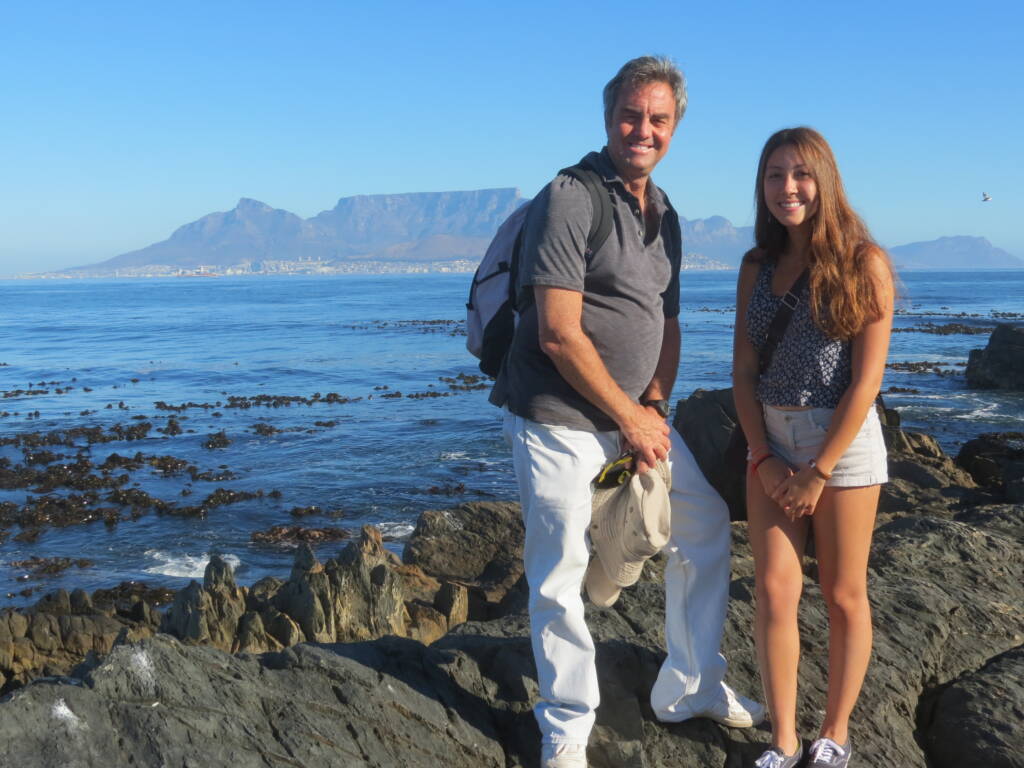For many who disembark, the voyage doesn’t truly end until weeks—or even months—later, when reverse culture shock sets in. Dr. Viviana Premazzi, a former staculty member who taught Intercultural Communication on the Fall 2024 Voyage, noticed this shared struggle among her students and fellow staculty. Now back in Europe herself, she’s launched Coming Home: Life After Semester at Sea, a YouTube series where fellow voyagers unpack the unexpected challenges of re-entry and the strategies that helped them—and can help you—feel grounded again.
We sat down with Viviana to explore what inspired the series, the patterns she’s observed, and her advice for future voyagers.
What inspired you to start your YouTube series Coming Home: Life After SAS? Was there a specific moment or conversation that sparked the idea?
What inspired me was that for quite a few months after we returned from Voyage 134 I have been receiving texts, phone calls, and/or having video chats with fellow SASers, and I kept hearing the same thing: “Adjusting after coming back from SAS was harder than expected.” Amid all the memories and connections, something unexpected happened: coming home was harder than we thought. That common thread made me pause. I realized I wasn’t alone in feeling out of sync, isolated, or even guilty for struggling to re-enter life at home. As Craig Storti says in The Art of Coming Home, reverse culture shock can be just as difficult—if not more—than the initial adjustment to being abroad.
And then one morning I had a lightbulb moment when I thought about all that series of conversations—warm, honest, and sometimes emotional— and I thought that Voyage 134 could still help Voyage 134, that sharing what we were going through could have helped other and not only SASers: those stories needed a space. That’s when the idea for Coming Home: Life After SAS was born.
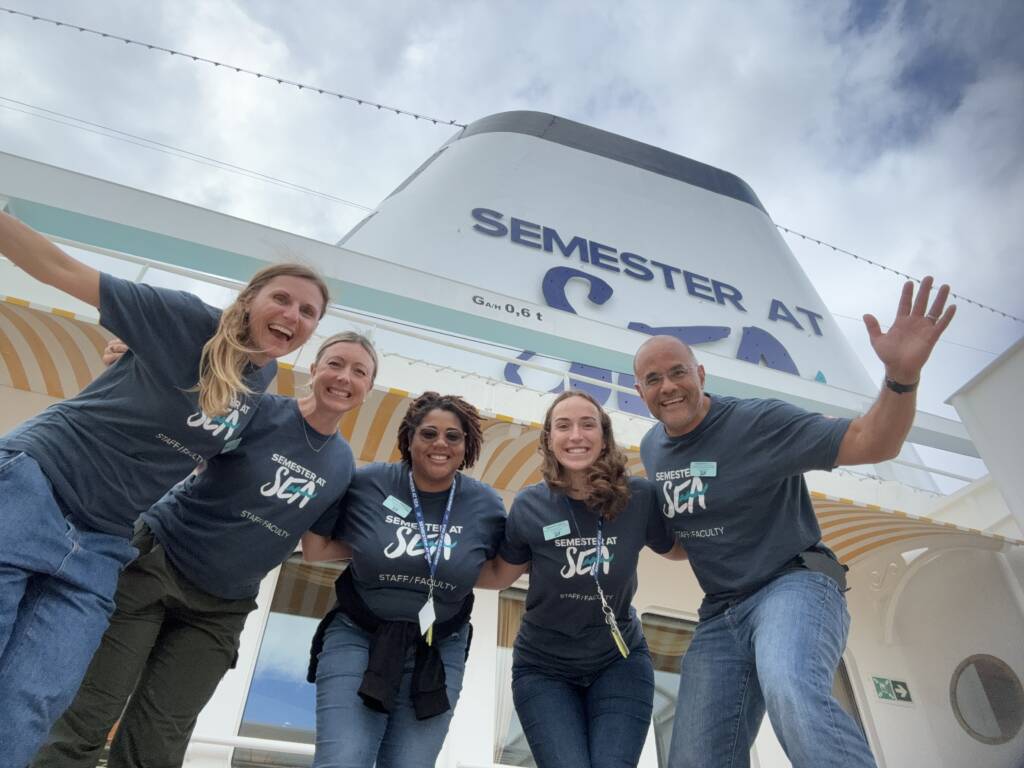
You’ve lived the experience both as a faculty member and as someone returning “home” after a voyage—how did that transition impact you personally? What were some of the most surprising challenges or realizations?
Having lived the experience both as a faculty member and as someone returning ‘home’ after Voyage 134, the transition impacted me in ways I wasn’t entirely prepared for— despite, ironically, being the professor of Intercultural Communication on the ship and the one who led some of the re-entry sessions. That fear of losing the memories, of not honoring what it all meant, has been a quiet but persistent part of the re-entry process.
What are some common themes you’ve heard from voyagers struggling to adjust after SAS? Are there any patterns in how people process re-entry?
In the conversations we’ve had through the Coming Home project and informal check-ins with fellow voyagers from Voyage 134, several recurring themes have emerged about the challenges of re-entry. Ultimately, the patterns are clear: re-entry isn’t just about going back—it’s about figuring out how to move forward with this new part of yourself.
What’s been fascinating is seeing how people process all this in different ways. Some channel it into creative projects, academic pursuits, or career choices. Others seek out new communities or start planning their next travel experience. And many are simply trying to find ways to keep the SAS spirit alive– through phone calls and meet-ups, friendships, shared storytelling, or initiatives like Coming Home.
How does your background in intercultural studies and global education shape the way you approach this topic?
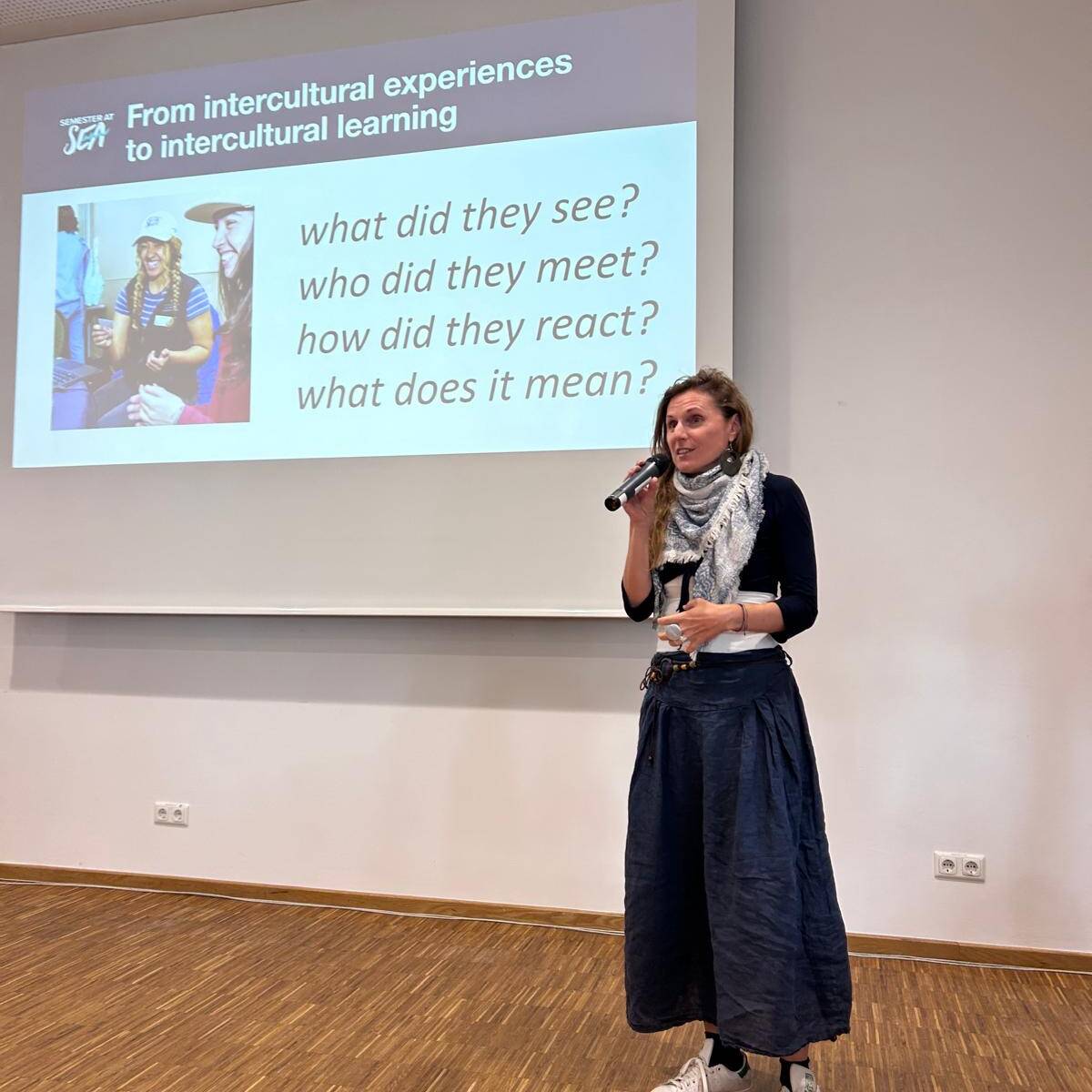
My background in intercultural studies and global education has deeply shaped the way I approach the topic of re-entry after Semester at Sea. From the very beginning of the Coming Home project, I knew that this wasn’t just about reverse culture shock in a theoretical sense – it was about real people navigating real emotional landscapes after a deeply transformative experience.
One of the first steps I took was to involve the shipboard counselors. I felt strongly that this project should offer not just storytelling, but also care. I wanted to make sure our fellow voyagers– whether they appeared in the videos or simply followed along– knew that they were not alone, and that professional support was available if they needed it. It was about creating a 360-degree support system, where people felt safe to process their journey in their own way and in their own time.
But perhaps the biggest learning for me – both from books and from personal experience and also confirmed already by many interviews – is this: you have to give yourself grace and time. Time to process, time to reflect, and most importantly, permission to not be “okay” right away. We often think of re-entry as a quick adjustment, something we should be able to handle smoothly, especially if we’ve been through transitions before. But what I’ve realized – and what many interviewees in Coming Home have echoed – is that it’s perfectly normal to experience darker moments: sadness, confusion, even grief. These aren’t signs of failure or weakness. They’re signs that something meaningful happened, something worth missing.
Accepting those moments, rather than pushing them away, is a powerful part of the growth. That’s something I try to communicate both as an educator and as a fellow voyager. And now, through Coming Home, we’re also looking at how to turn these shared reflections into long-term resources for future SAS voyagers, study abroad returnees, and anyone facing major life transitions. Because the need for support, storytelling, and compassion doesn’t end when the voyage does.

What can future voyagers do during their voyage to help ease the transition back home? Are there mindset shifts or habits they can begin to build early?
First, start thinking and talking early about what happens after the voyage ends. Have conversations with your ship friends and community about how you want to stay connected. Make informal plans – even if they’re just ideas – for reunions, collaborative projects, or simple check-ins. These kinds of conversations ground the experience in continuity, reminding you that it doesn’t have to end with disembarkation.
Second, start collecting and organizing your memories intentionally (easier said than done as time is also so limited with the ship rhythms). Keep a journal, create a shared photo folder, write down quotes or reflections, and think about the versions of your story that you’ll want to share and with whom. It’s incredibly helpful to reflect on how you might communicate the experience to friends, family, colleagues, or future students. This not only helps you process, but it also reinforces the value of what you’ve lived.
From an intercultural and educational standpoint, studies suggest that reflection during intercultural experiences – what we called “post port reflection on the ship” or you can call “ongoing meaning-making”: transforming the intercultural experiences in intercultural learning has a significant impact on how well those experiences are integrated later. The more you pause to reflect, to connect the dots, and to name what you’re learning (emotionally and intellectually), the more likely it is that the experience will stick with you and shape your future choices.
Finally, I encourage voyagers to build a habit of “intentional closure” something we often neglect. This could be through writing a letter to yourself about who you are at the end of the voyage, or even recording a video diary summarizing your growth. These kinds of practices help mark the transition and honor the experience, instead of letting it just fade away. The voyage is magical but its long-term impact depends a lot on how you carry it forward. Starting that process while still onboard can make a difference.
What do you hope viewers take away from the Coming Home series?

At its core, the Coming Home series was created to normalize what people were going through after Semester at Sea. So many of us returned home feeling disoriented, a bit lost, or even emotionally stuck and the first goal was simply to say: you’re not the only one. There’s nothing wrong with you. What you’re experiencing is real, valid, and actually very common after something as intense and transformative as a SAS voyage.
Beyond that, I hoped people would feel reconnected to each other and to the broader SAS community. Disembarking in Bangkok didn’t mean the end of everything. The community we built on the ship didn’t have to disappear the moment we stepped off. I wanted the series to show that the relationships, conversations, and shared experiences we had onboard could still serve as a source of support and inspiration even once we were scattered across continents.
What has been the most meaningful piece of feedback you’ve received since launching the channel?
Honestly, I receive small messages almost every day from people saying how helpful the series has been for them or how much they enjoy watching fellow voyagers share their experiences. It is also helpful in reminding them that the SAS community is still there, that they’re still part of it, and that they’re not alone in how they’re feeling. That sense of reconnection and validation means so much.
If you could sum up the SAS re-entry journey in one word, what would it be—and why?
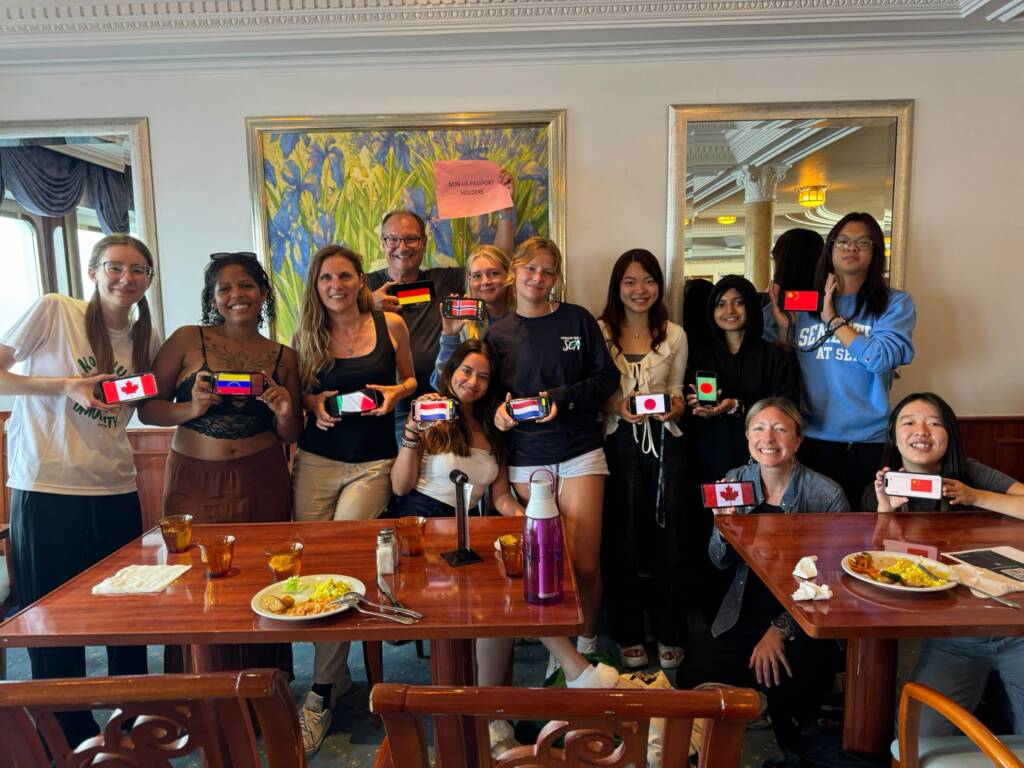
It would probably be “unexpected.” Interestingly, that’s the same word I’d use to describe the voyage itself. And funnily enough, on our very first day on the ship, Captain Jan, the captain of the MV World Odyssey, the ship used by SAS, told us: “Expect the unexpected.” At the time, most of us took that as advice for the travel ahead: unexpected weather, unexpected ports, unexpected adventures. And yes, all (or part) of that happened. But what I didn’t realize then was how deeply that phrase would also apply to the return home.
The re-entry experience was, for me and for many others, completely unexpected in its emotional intensity. I thought I was prepared. After all, I had taught intercultural communication, led re-entry sessions on the ship, and talked to students about what to anticipate. And it was not my first time living abroad or travelling the world and I love my job at home and the place where I live. But when I found myself back home, far from the people and rhythms that had become my everyday life, I was surprised by how disoriented and emotionally vulnerable I felt.
Just like the voyage itself, re-entry challenges you in ways you don’t see coming. It brings unexpected grief, unexpected questions about identity and purpose, and sometimes, unexpectedly powerful insights. But it also brings unexpected connection – when you realize that others are feeling the same things – and unexpected strength, as you start finding ways to integrate the experience into who you are becoming.
So yes, unexpected is the word. And it’s a reminder that the SAS journey doesn’t end when you disembark, it just changes course.
